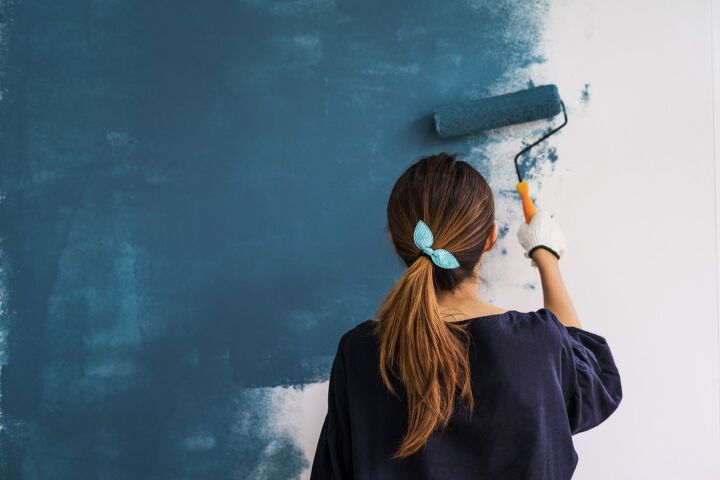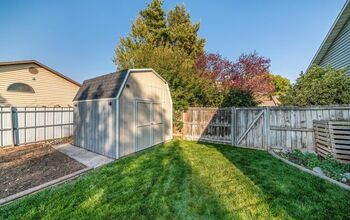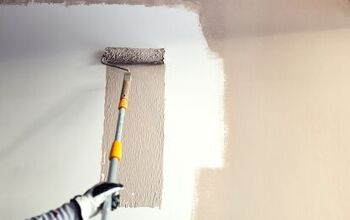When Is It Too Cold To Paint Inside?

Although there are a few measures you’ll want to take to ensure your paint clings to the walls and dries appropriately, painting throughout your home amid cold weather is generally a fantastic idea.
For instance, even in the winter, residents in several Southern U.S. regions need to be cautious of interior humidity. For your project, it is recommended to turn to highly skilled interior house painting specialists like those at Southern Painting because they have the knowledge to provide stunning and durable results in practically any condition.
Anytime is the ideal time to paint interior walls and trim, provided the space and surfaces you’re painting are 50 degrees or warmer. This is especially true if you want to paint your home’s interior before placing it on the market this spring. You are set to go if your living area and surfaces can provide some level of warmth.
When a furnace is not running, space heaters are excellent for painting a house. Additionally, painting businesses are frequently more accessible in the sluggish winter months, which can help them finish your project faster and fit around your hectic holiday schedule. Because of the shorter winter season, you can save on your painting project costs.
How Do You Paint Indoors When It Is Cold Outside?
Don’t let the weather get in your way if you’re planning for a large painting renovation. While you’re able to paint when it’s cold out, you’ll want to make sure that you’re doing it properly so that the paint doesn’t end up peeling.
Below are some tips for you to paint when it’s cold out.
Watch the Room Temperature
The lowest temperature needed to paint is typically 10 degrees Celsius, but before you start painting, make sure to check your paint tin because this temperature occasionally varies depending on the brand and type of paint you are using.
Before beginning your painting endeavor, turn on a heater to assist the space warm up a bit. This will also aid in reducing the drying time.
Watch the Wall Temperature
Remember that the surface temperature of the foundation you are painting will be lower than room temperature and that different surfaces—tiles, gyprock, wood, brick, etc.—will have varying temperatures.
In order to keep the surface temperature above the required minimum of 10 degrees Celsius while the heater is warming the space, keep in mind that the space must be at a higher temperature (or the temperature listed on your paint can).
Keep the Air Flowing
When working on interior projects in chilly and rainy weather, patience is essential. Be prepared for lengthy drying times because the paint will cure considerably more slowly.
A longer recoat procedure could result from this. By increasing the airflow and ventilation in the space you are painting, you can reduce the drying rate by opening doors and windows.
Use fans and blow heaters to move the air if it’s too chilly or wet to open windows or if you’re painting in an open-concept space.
Plan Out The Project
Even though these chilly and rainy days make painting more challenging, it’s still achievable despite the low temperatures and lengthy drying times!
To guarantee you are painting in the best conditions for the weather, avoid starting your project too early in the morning or working into the afternoon. Remember that there is less daylight available throughout the day during the colder months, so plan on your project taking longer to finish.
This is true not just because paint dries more slowly during the winter, but also because you will need to limit the amount of painting you can do in a day.
Watch For Mold
The area that you wish to paint may develop some mold as a result of the rain and the darker, outdoor days. Don’t worry; while finding mold may lengthen the project, it is simple to remove.
The best materials to use for mold removal and treatment can vary slightly depending on the type of surface and the environment the mold is in.
For more information on mold prevention and mold removal, click here. As usual, if you need assistance finding something, just ask one of our in-store experts.
Is it OK to Paint Inside in the Winter?
Winter is the perfect time to paint the outside or interior of your home since there is less humidity, which causes the paint to dry substantially faster and better. Don’t wait till the months with high humidity and temperatures.
What Happens if You Paint a House When it’s too Cold?
Paint must dry for several days, and as the temperature drops, dew can collect on surfaces, preventing the paint’s water from evaporating quickly enough.
This has an impact on the paint’s durability over time, as well as how well it withstands cracking. Mildew or stains can also be caused by colder temperatures and surface moisture.
How Do You Ventilate a Room While Painting in the Winter?
To remove vapors from the workspace, use box fans positioned on windows. Ensure that they can’t fly out the window.
Make sure the rooms being painted have enough cross-ventilation if fans can’t be used. Give neighbors in nearby flats advance notification of the start of painting.
Does Paint Dry in 40-degree Weather?
But keep in mind that for 36 hours after application, the air and surface conditions should not fall below 35° in order for the paint to completely dry and cure.
Experts advise painting in weather no lower than 50°F to be on the safe side and prevent any unwelcome speed bumps.
Does Temperature Affect Indoor Painting?
The paint is pushed to dry too quickly if the interior temperature is too high. On the freshly painted surface, this frequently leads to cracking or can result in the formation of a film.
The fresh paint will strain to adhere to the surface if it is too cold. As a result, the texture or look may be uneven. You’ll have to make sure that the room is at least somewhat warm and that the walls aren’t freezing before ou begin painting.

Heather is a passionate writer who loves anything DIY. Growing up, she learned everything from home repairs to design, and wants to share her tips with you. When she's not writing, she's usually hiking or searching for her next DIY project.
More by Heather Robbins


























![10 Most Dangerous Neighborhoods in Baltimore [Updated]](https://cdn-fastly.upgradedhome.com/media/2023/07/31/9075655/10-most-dangerous-neighborhoods-in-baltimore-updated.jpg?size=350x220)
